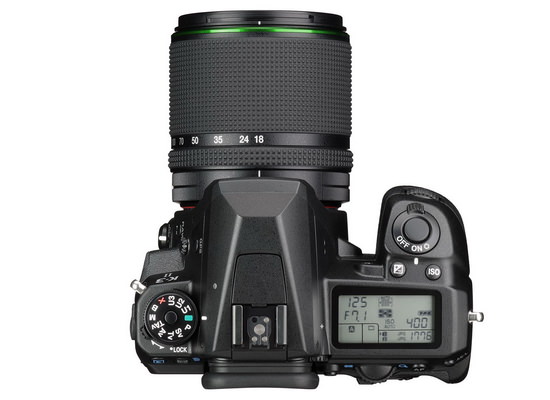Featured Products
Following the recent rumors, Ricoh has officially revealed the Pentax K-3 II DSLR camera which comes with a Pixel Shift Resolution mode.
Pentax K-3 has brought some new features to the DSLR market, such as the software-based anti-aliasing filter. Its replacement has just been announced and it also comes packed with new features for the DSLR segment, one of them being a trait similar to one added to a mirrorless camera.
The new Pentax K-3 II has been unveiled by Ricoh with a Pixel Shift Resolution mode, reminiscent of the High-Res mode of the Olympus E-M5 Mark II, allowing users to capture higher-quality images of still objects when using a tripod.

Pentax K-3 II is here with a 24.3-megapixel APS-C sensor and a Pixel Shift Resolution mode that offers improved color reproduction and image quality.
Ricoh unveils Pentax K-3 II DSLR camera with Pixel Shift Resolution mode
Image quality is regarded as the most important feature for many photographers. As a result, the new Pentax K-3 II has been designed to offer the best possible image quality.
The DSLR employs a 24.35-megapixel APS-C CMOS sensor without an anti-aliasing filter, which raises image quality at the expense of moiré patterns.
If photographers encounter a scene that could lead to moiré showing up in their photos, then they can simulate the presence of an AA filter using built-in software. The system uses the built-in Shake Reduction technology in order to add microscopic vibrations to the sensor when taking photos. The power of the vibrations can be set, too, so if a particular scene could lead to a lot of moiré patterns in your shots, then you can set the software to increase the effect’s levels.
Such feature was also available in the K-3. However, what the previous model did not have, was the Pixel Shift Resolution mode. The system is similar to the one found in the Olympus E-M5 Mark II mirrorless camera, but it does not provide an increase in resolution.
The E-M5 Mark II’s 16-megapixel sensor can capture 40-megapixel shots of still subjects when shooting from a tripod. On the other hand, Pentax K-3 II’s mode also works with still subjects and from a tripod, but the resolution remains the same. This mode will shift the sensor by a pixel to capture four images while recording the entire color and other image information in all of its pixels. This leads to improved color reproduction, less noise even at the maximum ISO of 51,200, and sharper images.

Pentax K-3 II employs a 3.2-inch LCD screen and an optical viewfinder as means to frame the scenes.
Pentax K-3 II features improve Shake Reduction system, while waving goodbye to its flash
The DSLR is powered by a PRIME III image processor which delivers 8.3fps in burst mode for 23 RAW shots and 60 JPEG shots. If users shoot in RAW, then the resulting images can be processed directly from the camera, as the Pentax K-3 II comes with a built-in RAW converter.
Its autofocus system is based on a SAFOX 11 system that includes 27 autofocus points. 25 out of 27 points are cross-type and they are located in the middle of the frame. An autofocus assist lamp is present, but a built-in flash is not.
This new K-mount camera can capture full HD videos at up to 60fps and with stereo audio courtesy of an external microphone.
The aforementioned Shake Reduction technology offers up to 4.5 stops of image stabilization. The shutter speed range between 30 seconds and 1/8000s, while the external flash speed sync is set at 1/180s.

Pentax K-3 II does not have a built-in flash. Its place has been taken by a GPS and an Astrotracer for capturing better astrophotography shots.
Weathersealed Pentax K-3 II employs a built-in Astrotracer for tracing celestial bodies
The empty space left by the nonexistent pop-up flash has been filled by a built-in GPS module and a built-in Astrotracer. Users can record their location, altitude, and other data, while the electronic compass shows their direction while logging their travel.
The Astrotracer used to be an external device that could be mounted on the hot-shoe. Now it is integrated in the Pentax K-3 II and can track celestial bodies, thus allowing photographers to become astrophotographers and to shoot high-quality images of stars, planets, galaxies, or our moon.
As with most Pentax-branded ILCs, the K-3 II is weathersealed. It features a rugged construction that is resistant to dust, cold, and water droplets, so users can keep shooting in adverse conditions.
The rumor mill spoke about wireless connectivity allowing users to control the DSLR with a smartphone or tablet. However, the device has dual SD card slots with support for FLUCARD technology. These are wireless cards and users can simply transfer the files to a smartphone or tablet.

Pentax K-3 II will become available this May for $1,099.95.
Ricoh to release the DSLR in late May for about $1,100
Pentax K-3 II features a USB 3.0 port and a miniHDMI port alongside microphone and headphone ports. The DSLR has a battery life of up to 720 shots on a single charge.
It weights 800 grams / 28.22 ounces including its battery. The shooter measures about 131 x 100 x 77mm / 5.16 x 3.94 x 3.03 inches.
Ricoh has added a built-in optical viewfinder with 100% coverage and 0.95x magnification. A fixed LCD screen with a resolution of 1,037,000 dots is available on the back and it can be used as a Live View mode.
Pentax K-3 II will be released sometime in May 2015 for a price of $1,099.95. The DSLR can be pre-ordered right now through Amazon.






































